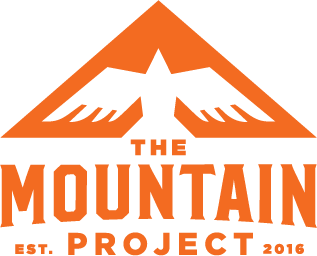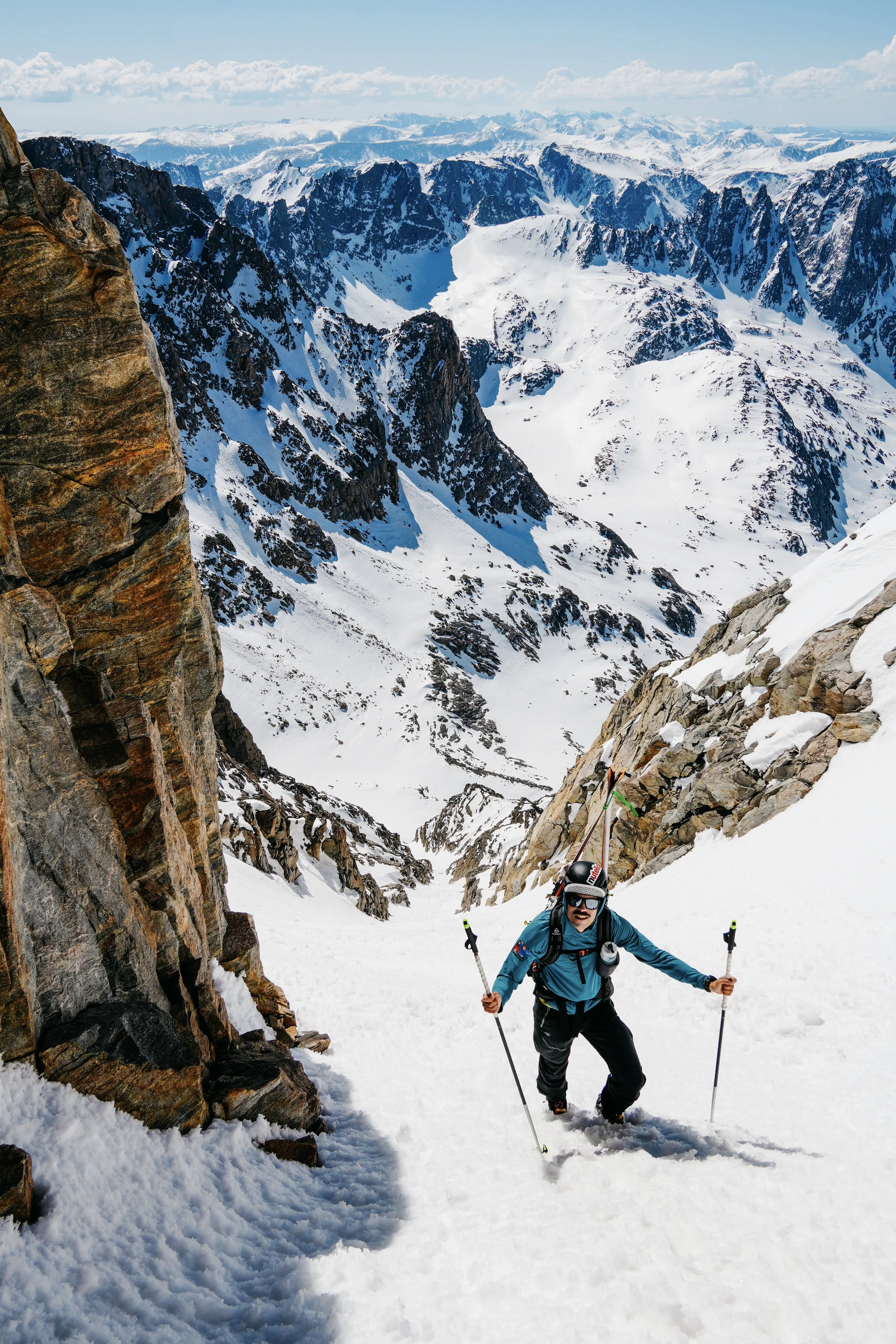The Fall Transition: Building Toward Ski Season Without Breaking Down
The Shoulder Season Shift
Fall in Bozeman is a restless season for me in anticipation of the coming winter. The mornings start crisp, Blackmore has that first dusting of white that sends a jolt of energy through me, and the layers keep adding to my morning bike ride. For many of us, it’s the in-between time; too rainy and cold for mountain running, but not enough snow for touring. It’s easy to drift through October and November hoping that fitness from summer trail runs or bike rides will carry over to ski touring. But the fall transition is more than just waiting for snow and buying gear you don’t need, it’s the chance to prepare your body for touring. Done right, it sets you up to start the ski season feeling strong and durable and not nursing an early-season injury.
Mental and Seasonal Reset
First things first, if you just had a season of competition, Fall is your time to take a mental rest. If you haven’t already, take 2 weeks off training. Do whatever you want: sit on the couch, read a book, go run, be social, sleep, eat whatever, play video games. Do anything but “training”. Reflect a little on your summer fitness, and what goals the winter may bring. Your body needs this psychological break, and it will thank you by being more focused when you step back into training.
Trail Legs vs. Ski Legs
The first thing to recognize is that running or biking fitness doesn’t perfectly translate to ski touring. Sure, you might have the aerobic base, but the movement patterns and therefore the muscular demands are different. Skis weigh down your legs each step, and a touring pack is extra weight you must carry up. Without some sort of progressive loading during the fall to get ready for that extra weight, the early ski season can feel awkward or even painful. Tight calves and Achilles, knee pain, and hip fatigue are all common in the first few weeks for athletes who skip the transition work.
Strength and Muscular Endurance (ME)
Runing and biking all summer has probably set you up with a solid aerobic base fitness, and we don’t want to lose that. Ski touring is still an aerobic driven activity, and if you can’t make it to the top, it doesn’t really matter what kind of downhill leg strength you have. Now it’s time to focus on strength and muscular endurance and start practicing more ski specific movements (i.e. uphill hiking). It doesn’t take much, 1-2 gym sessions a week focusing on lower-leg and hip stability, and 1 ME workout (think weighted uphill hiking/stair steppers, uphill intervals) per week are plenty, while keeping as much easy aerobic volume as fits into your already busy schedule. The goal is consistency, and not blasting your legs for 2 weeks, only to fall off for the rest of the transition season.
You don’t need to abandon your aerobic fitness; you just need to adapt it. Keep your aerobic base steady with long, easy zone 1–2 sessions, but start blending in activities that mimic ski movement: hiking with weight, steep power hiking with poles, or roller skiing if you’re into it. If you’ve been hammering miles all summer, fall is a good time to reduce impact while maintaining duration. A 3-hour zone 2 hike with poles does more to prepare you for touring than another tempo run.
Upper Body
Another key difference between running and touring is your upper body. Besides stability on the skin track, your upper body provides significant forward power especially important for skimo athletes. If you don’t believe me, google shirtless Nordic skiers, and reflect on the fact that those are endurance athletes. Hopping on a ski-erg once a week for 20-30 minutes won’t kill you, and adding some pushups and pullups to your strength routine is an easy addition and the best bang for your buck.
Injury Prevention: The Hidden Goal of Fall
The secret coaching goal of the fall transition season for my athletes is that it’s just injury prevention. Yes, you can get a good head-start on your skiing fitness in the Fall (and you should if you are trying to be competitive), but the real gains will come when you can actually get on snow and start skinning. Making sure your body handles the transition from hiking to skinning well will maximize the quality of skimo/ski touring training you are able to do once it becomes an option!
How do you not get injured? The biggest risk this time of year isn’t doing too little, it’s doing too much too soon. Don’t jump right into 6 days of training per week when you’ve only been doing 2-3. Don’t crush 3 ME workouts a week off the couch. Don’t blast down Blackmore at the first sign of snow. Ease into it; have patience. A good rule of thumb is to not increase your training load (weight, volume, time at intensity) by 5% each week, and to not change more than one variable per week. Increased weight this week? Don’t increase reps. Increased intensity of a workout? Don’t increase volume. Consistency is king, and patience will reward.
Sample Training Plans
Beginner Skimo Athlete – 6 hours/week
| Weekday | Workout | Hours |
|---|---|---|
| Monday | Rest | 0 |
| Tuesday | ME Interval Hike (3×10 min @ 5–6 RPE, 2 min rest intervals), weighted backpack | 1.5 |
| Wednesday | Strength Training | 0 |
| Thursday | Easy hike w/ poles | 1 |
| Friday | Uphill sprints w/ skimo poles (10×20s sprints, 3–5 min recovery between) | 1.5 |
| Saturday | Strength | 0 |
| Sunday | Long run | 2 |
Intermediate Skimo Athlete – 10 hours/week
| Weekday | AM Workout | PM Workout | Hours |
|---|---|---|---|
| Monday | Rest | – | 0 |
| Tuesday | ME Interval Hike (3×15 min @ 5–6 RPE, 2 min rest intervals), weighted backpack | Ski-Erg (6×2 min @ 6–7 RPE), Strength Training | 2 |
| Wednesday | Easy hike w/ poles | – | 1 |
| Thursday | Easy hike w/ poles | – | 1.5 |
| Friday | Tempo hike (45 min @ 5–6 RPE) | Ski-Erg (6×2 min @ 6–7 RPE), Strength Training | 2 |
| Saturday | Easy run or hike | – | 1 |
| Sunday | Long hike | – | 2.5 |
Closing Thoughts
Think of fall as the quiet work season, the time to put in foundational work so you can move freely once the snow stacks up. The goal isn’t to be in race shape when the backcountry has enough snow to start touring, but to show up strong, balanced, and durable. You don’t have to be perfect, just consistent. Show up to The Mountain Project twice a week, and stick with it. There are plenty of classes to keep you entertained through the rainy days, but a little structure now pays off big. Confused about it all or don’t want to deal with the stress of figuring it out? Hire a coach! Peace of mind will help.
Some last thoughts for when the skins come on: Ease into early-season tours. The first few weeks of skiing are not the time to chase vertical or “get your legs back.” They’re the time to apply all that patient fall work — slow, steady, and intentional.
As always: keep rest days sacred, maintain recovery routines, and listen to your body. Soreness is normal; sharp pain or swelling is not.
About the Author:
Jonas is an endurance athlete, coach, and snow science student based in Bozeman, Montana.
From ultrarunning in the Alps to ski mountaineering in the Tetons and racing skimo across the Mountain West, Jonas brings a depth of experience to his coaching. He currently coaches the Bridger Ski Foundation (BSF) Youth Skimo Team and has previously worked with USA Skimo and Montana Endurance Academy to help grow the sport nationwide. With a background in healthcare, six years of endurance coaching, and eight years of dedicated training in trail running and skimo, Jonas is excited to share his knowledge and passion with athletes of all levels.


